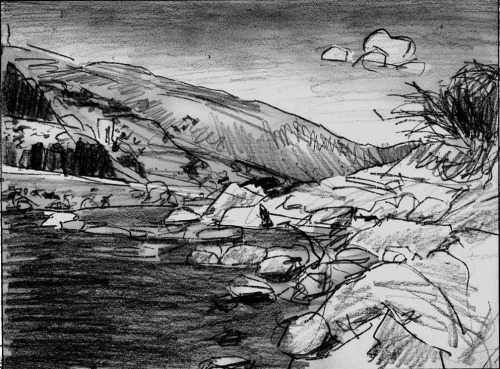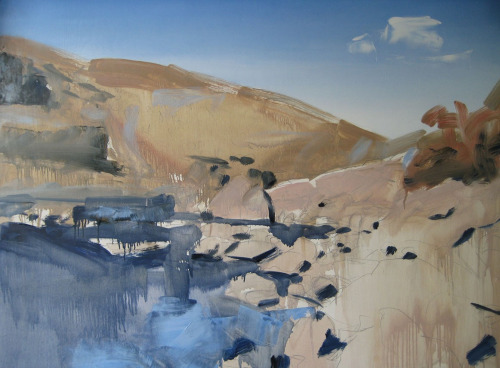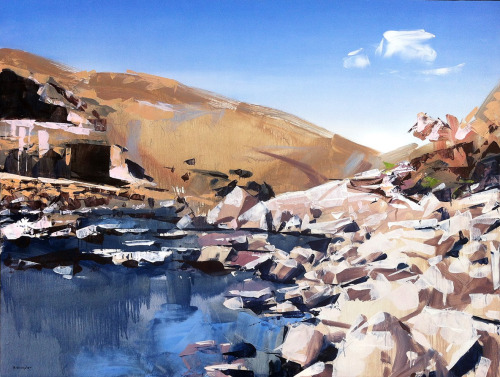Best Practices for Commissioning Art For Clients

When we’re looking for the perfect artwork for a client, we often feel like Indiana Jones (minus the bull whip, of course): crusading near and far, navigating the opaque (i.e. the art world), following leads to seeming dead ends until we find the hidden door. For the most part, finding the “it” piece is a matter of time and dogged determination.
But sometimes, that “it” piece doesn’t exist and may not even be a twinkle in the artist’s eye – yet. Enter: The Commission, a new work an artist is hired to create not previously in existence. A commission may be similar to an existing work in style or content, but will usually have specific parameters for size, shape, color, etc. and should maintain its own originality. While it’s not necessarily a site-specific work, it’s created for a particular purpose or project.
For some (clients and artists included), commissions can be scary. When you throw in things like control, trust, vision and communication, it’s easy for all parties involved to get overwhelmed. We dots, however, have quite a bit of experience in the commission department. And since we’re firmly nestled in the space between business and art, we’ve got a unique perspective on the whole process from start to finish that we’re going to share (‘cause we’re cool like that.)

First things first: a commission should be in the vein of the artist’s body of work and something she might have ostensibly created her own. This means if an artist does traditional landscape paintings you shouldn’t ask her to do a graffiti-like mural and vice versa. The best commissions push the artist and her work to the next level – changing the scale, maximizing materials, exploring deeper meaning. Often, a commission means having the vision and faith in artists that they sometimes don’t even have in themselves. As an artist, you can and should ask for help when you’re in over your head or are unsure of your next move. We’ve got a bevy of resources we turn to for their expertise, plus we’ve seen the gamut when it comes to commissions. The last place you want to be in is having to redo a commission, which could be costly and eat up time you don’t have.
Point #2: clients are clients not artists, and artists are artists not graphic designers. If you as a client are looking to dictate every aspect of a commission, you are better off hiring a graphic designer to execute your vision. Why? Because artists have worked their whole lives to develop their own vision, hone their craft and visually express both. Artists generally come up with better solutions, better executions, better visions, better artworks than non-artists. Relinquishing control and trusting an artist can result in stunning results beyond imagining. For example, we commissioned Hilary White to create a work based on the history of Florida and Florida State University for the SpringHill Suites Gainesville last year. We knew Hilary would create something awesome based on her body of work, but we didn’t know how completely and totally awesome it would be until we got her first concept drawing and then the completed piece. Had we tried to control every aspect of the work, we’re certain the work would have lost its energy. Hilary’s creativity would have not only been squashed but squandered.
Finally, make sure to communicate clearly and effectively from start to finish. Usually, a single existing work or a body of work will serve as the basis for a commission but with modifications due to specific size requirements, content, timeline, etc. Clients and artists should understand any parameters before going into a commission not halfway through. Artists may request non-refundable deposits or design fees, which are typically put towards the overall price of the commission, to create a rendering. Don’t be afraid of questions! As they say, the only stupid question is the one not asked. Still, words can get everyone into trouble because they’re open to interpretation. An initial concept sketch helps everyone (artist, client, us) envision the final result. Additionally, checking in periodically with work-in-progress photographs at 60, 75 and 95% completion keeps everyone on track and able to make adjustments if necessary before it’s too late. Feedback should be given in a timely manner and the artist should always address any concerns or questions immediately. Perhaps the best part about commissions are the opportunities to witness the artistic process firsthand through studio visits, conference calls and meetings, which can provide marketing and documentary opportunities for social media, videos and catalogues for everyone involved.
Like any good relationship, a good commission takes work, not simply on the artist’s part. All parties need to be equally invested, participatory, open and communicative throughout the process. Go team!

Images courtesy of David Shingler and Abend Gallery.